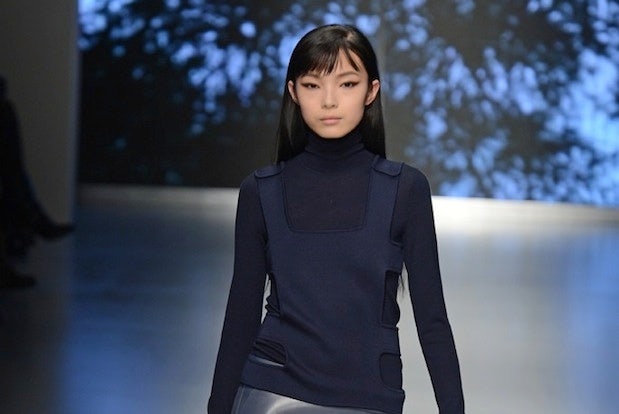Fashion Results More Mixed Than Hard-Hit Industries#

A look from Salvatore Ferragamo's fall 2013 ready-to-wear collection. The label saw notably optimistic China numbers in its first quarter. (Women's Wear Daily)
As first-quarter earnings reports roll in for luxury brands, the effect of the China market continues to play an increasingly large role in their overall numbers. Although makers of certain goods such as watches and baijiu have taken major hits this quarter as China's luxury crackdown continues, the results for major fashion labels and multi-industry luxury conglomerates are more of a mixed bag.
Jing Daily has taken a look at the role of China in some of the most talked-about earnings reports from the first quarter, and the news is not all bad. For some, such as
Hermès, China continues to be the place to make up for lagging growth numbers elsewhere, while others with slower growth, such as PPR, saw individual brands do particularly well in the Chinese market.
Many of the companies discussed below have seen at least a third of their total sales coming from Asia and another huge portion from Chinese tourists buying abroad, making it crucial to examine the role China plays in their total growth.
Salvatore Ferragamo#
With the Asia-Pacific area comprising 36 percent of its sales, Florence-based Ferragamo had a highly successful first quarter by doubling its overall profits. Asia was up 6 percent compared with first-quarter growth last year, and China's retail growth rose by 20 percent. The company's chief executive Michele Norsa said that second- and third-tier Chinese cities in particular were driving these successful China numbers.
Burberry#
Although Burberry experienced plunging stocks in September, it reported double-digit growth from the six months leading up to March 31, providing a spark of optimism for those worried about slowing markets. Asia sales, which comprise 42 percent of the group's total revenues, rose 15 percent. This does not count Chinese travelers purchasing goods in Europe, as Burberry's outgoing chief financial officer has stated that tourists from abroad make up half of the company's Europe sales.
LVMH#
The luxury conglomerate had a sluggish first quarter with 5.5 percent revenue growth attributed to a lack of Asia demand, but some of its divisions did better than others in the region, which comprises 33 percent of the company's revenue. The wine and spirits division saw 12 percent growth thanks in part to growing Chinese demand for Hennessey Cognac, and the selective retailing division actually saw 42 percent growth in Asia as opposed to 9 percent in the United States.
PPR (Soon to be Kering)#
Kering's overall first-quarter numbers were labelled "disappointing" by the Savigny Luxury Index. However, according to the company, its biggest bright spot for China was Bottega Veneta, which was up more than 20 percent and was a factor in the brand's 9 percent overall growth. Gucci's revenue growth in China was "high," according to the company's first-quarter summary, with an overall 4 percent revenue increase. Asia sales accounted for 25 percent of the group's total sales, a slight increase from last year's 24.5 percent.
Hermès#
Despite having the lowest first-quarter growth since 2009, the luxury giant's overall 10 percent rise in sales was boosted by a 17 percent increase in non-Japan Asia (which includes China, Macau, and Taiwan). In addition, Chinese tourists shopping abroad comprised 30 percent of the company's sales last year.